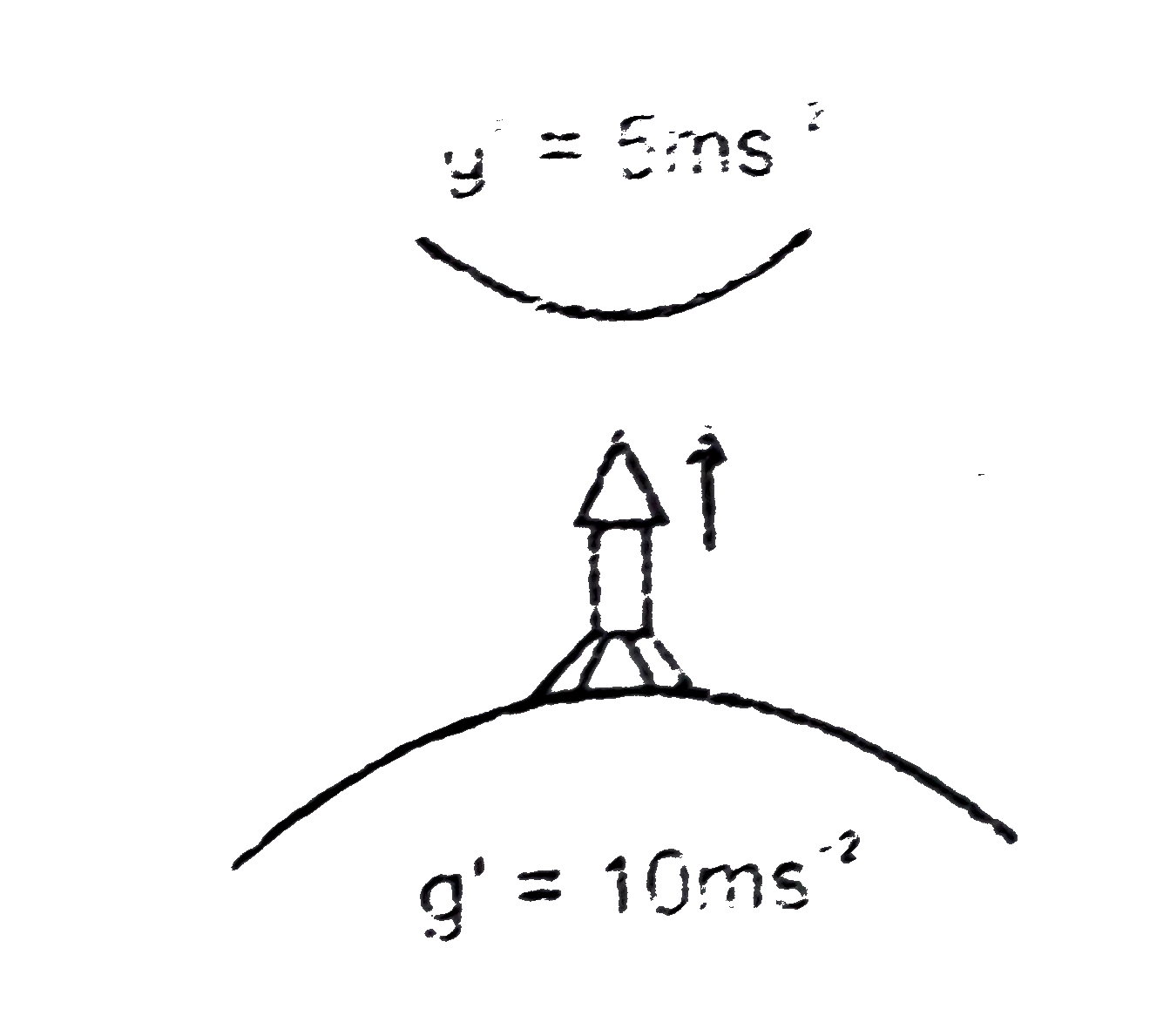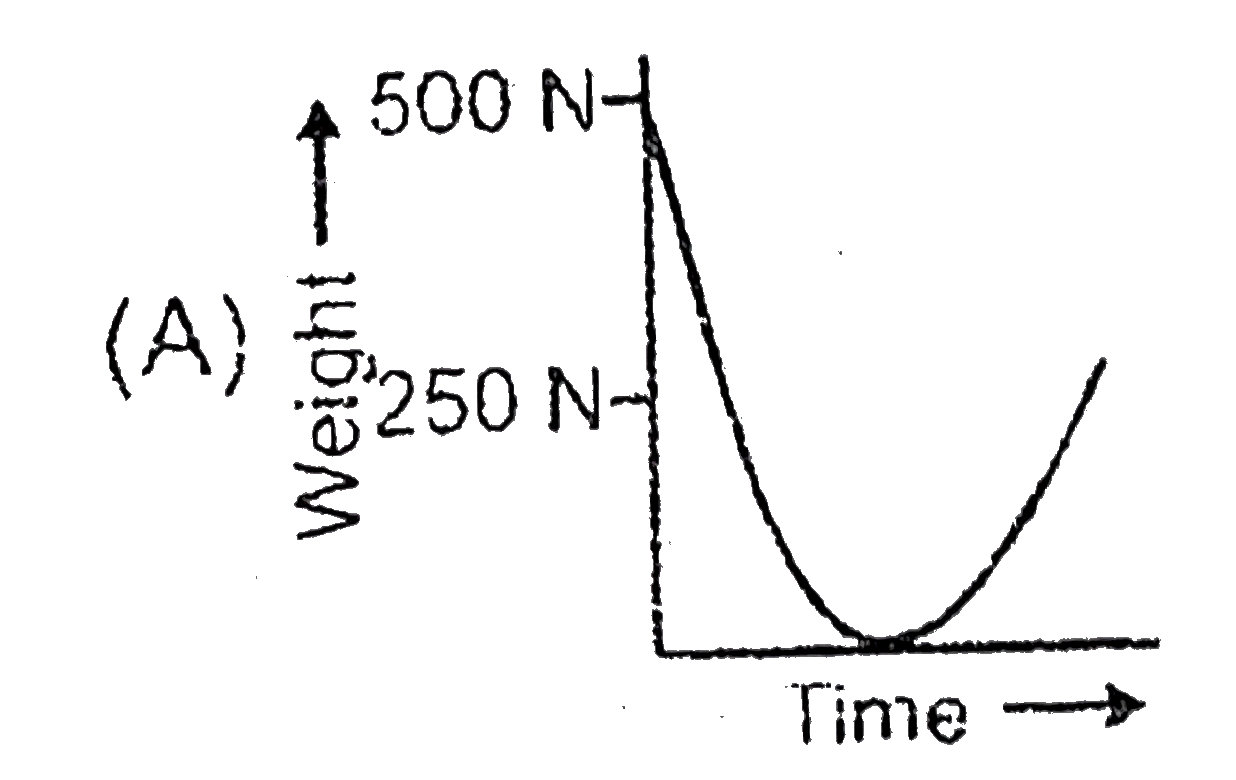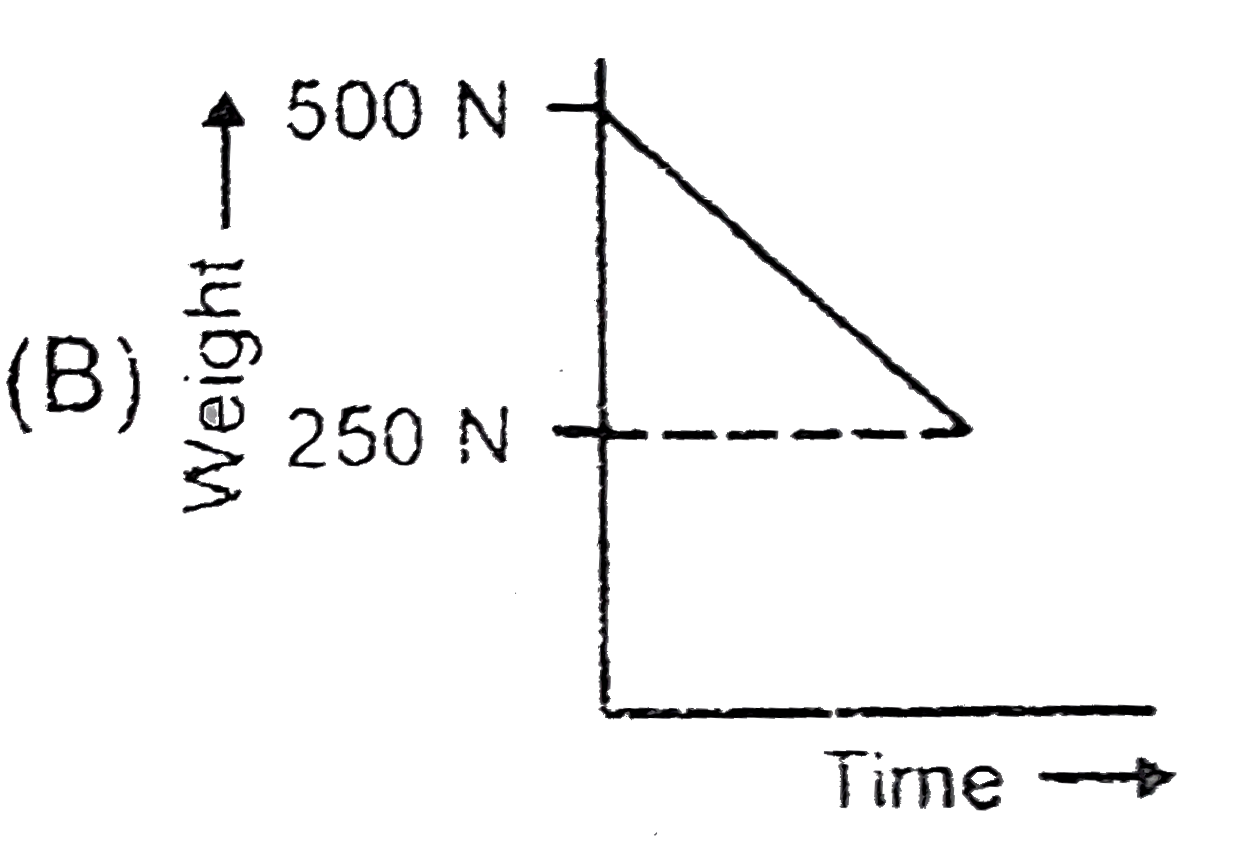Suppose, the acceleration due to gravity at the Earth's surface is 10 m and at the surface of Mars is 4 m A 60 kg passenger goes from the Earth to the Mars in a spaceship moving with a constant velocity. Neglect all other objects in the sky. Which part of figure best represents the weight (net gravitational force) of the passenger as a function of time?

P
Q
R
S
The correct Answer is:C
Weight of passenger on Earth N
Weight of passenger on Mars N
As the passenger is going from the Earth to the Mars in a spaceship moving with a constant velocity so the acceleration due to gravity because of Earth and Mars becomes negligible (zero) at some point in space. Thus, weight of passenger becomes zero.
After sometime, as he reaches near to the Mars, his weight increases because of acceleration due to gravity of Mars. Finally, at the surface of Mars, his weight becomes 240 N.
Topper's Solved these Questions
Similar Questions
Suppose the acceleratio due to gravity at thth's surface is 10ms−2 and at the surface of Mars it is 4.0ms−2. A passenger goes from the to the mars in a spacehip with a constant velocity. Neglect all other object in sky. Which part of figure best represent the weight (net gravitational force) of the passenger as a function of time?

View SolutionThe acceleration due to gravity at a place is 0.2m/s2. Find the height above the earth's surface .
View Solution
Knowledge Check
Let g be the acceleration due to gravity at the earth's surface and K the rotational kinetic energy of the earth. Suppose the earth's radius decreases by 2%. Keeping all other quantities constant, then
Ag increases by 2% and K increases by 2%Bg increases by 4% and K increases by 4%Cg decreases by 4% and K decreases by 2%Dg decreases by 2% and K decreases by 4%If accleration due to gravity on the surface of earth is 10ms−2 and let acceleration due to gravitational acceleration at surface of another planet of our solar system be 5ms−2 An astronaut weighing 50kg on earth goes to this planet in spaceship with a constant velcity The weight of the astronaut with time of fiight is roughly given by
 .A
.A B
B C
C D
D
Acceleration due to gravity at earth's surface if 'g' m/s2. Find the effective value of acceleration due to gravity at a height of 32 km from sea level : (Re=6400km)
A0.5gm/s2B0.99gm/s2C1.01gm/s2D0.90gm/s2
What is the acceleration due to gravity at a height h ( = radius of the earth) from the surface of the earth ? ltbgt (g=9.8m/s2)
View SolutionThe acceleration due to gravity near the earth's surface is 9.8m/s2, and the earth's radius is 6,400 km.From this data calculate the mass of the earth. Use any universal constant if required.
View SolutionAcceleration due to gravity on the surface of the Earth is 9.8ms−2. Find its new vallue if both the radius and mass increase by 20%.
View SolutionIf g is the acceleration due to gravity on the earth's surface the gain in the potential energy of an object of mass m raised from the surface of the earth to a height equal to the radius R to earth is NmgR2 Find the value of N .
View SolutionThe acceleration due to gravity on the surface of the earth is 10ms−2 . The mass of the planet . Mars as compared to earth is 1/10 and radius is 1/2 . Determine the gravitational acceleration of a body on the surface on Mars .
View Solution

